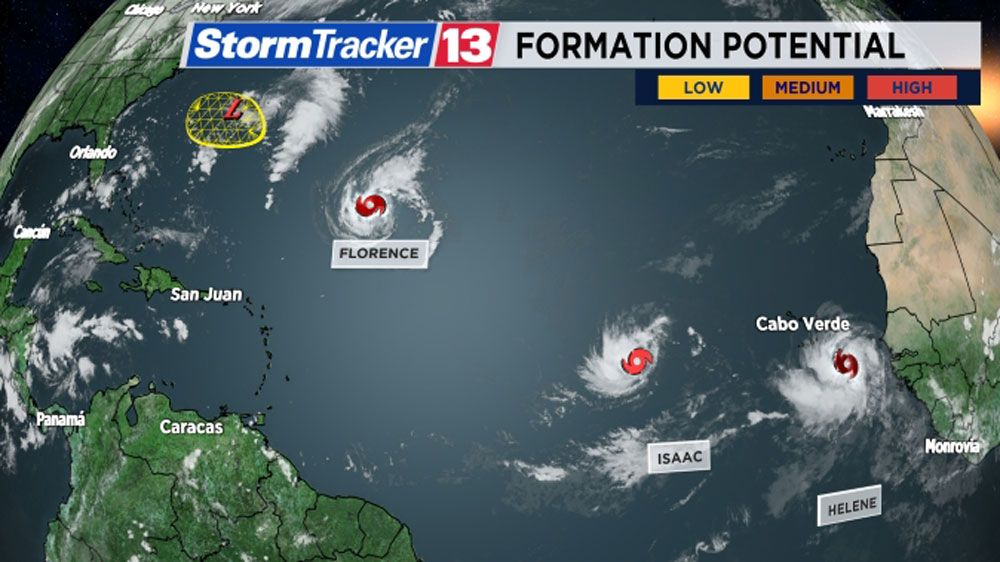ORLANDO, Fla. -- Tropical Storm Isaac strengthened Saturday after forming in the afternoon, while Tropical Storm Florence continues to meander closer to Bermuda and the United States.
Tropical Storm Florence is the biggest concern to the US, as it will likely impact parts of the Carolinas later this week.
- TRACKING THE TROPICS: Watches, warnings, forecasts, spaghetti models
- STORM SEASON 2018: Interactive Storm Tracker, Storm Supply checklist, FAQs
Isaac formed from Tropical Depression 9 at 5 p.m. The storm is located at 1580 miles east of the Lesser Antilles.
Isaac is moving to the west at 8 mph, with maximum sustained winds increasing to 50 mph.

Isaac is expected to continue west over the next few days, and could be a hurricane by Monday.
It is possible Isaac will directly impact some of the Lesser Antilles early next week as a hurricane, before moving into the Caribbean Sea.
Isaac will have to watched for any future impacts to the United States and Florida as we move into mid-September.
Tropical Storm Helene
Tropical Storm Helene is moving closer to the Cabo Verde Islands, and is expected to reach portions by tonight.
Sustained winds remain at 60 mph, and the storm is moving west at 13 mph. Models intensify Helene into a hurricane by Sunday, but look to turn this storm north before it gets close to the United States.
Hurricane Watch is in effect for:
- Santiago
- Fogo
- Brava
Tropical Storm Warning is in effect for:
- Santiago
- Fogo
- Brava

Tropical Storm Florence
Florence is a little stronger but still a tropical storm, located 790 miles southeast of Bermuda. The storm is moving west at 6 mph.
Maximum sustained winds are at 70 mph. Gradual strengthening is forecast and Florence could become a hurricane sometime soon, and possibly a major hurricane again by Monday.
Although it is quite a distance away, swells generated by Florence will begin to affect Bermuda Saturday, and Florida along with most of the East Coast of the U.S. will see increasing waves and rip currents this weekend.

Tropical storm force winds extend outward up to 140 miles from the storm’s center. The minimum central pressure is 995 mb.
Forecast models have been inconsistent in determining the future path of Florence, but it’s growing more likely to bring significant impacts to the east coast by mid to late next week. We will closely be monitoring its track in the coming days.




